You don’t need to be an artist – just a little practice and creativity can turn your journal into a space that reflects your style while keeping you organized.
Here’s what to have on hand to get started:
Once you’re comfortable, consider adding gel pens and highlighters to expand your creative toolkit.
Now that your tools are ready, create dedicated pages in your journal to practice and refine your skills.
Here are a few ideas for practice layouts:
Don’t hesitate to mix things up – this is your space to explore and improve.
Ready to dive in? Follow these steps for your first drawing:
Mistakes happen, and that’s okay! Turn them into creative opportunities – washi tape is great for covering errors or adding flair. Plus, dot grid journals make it easier to keep proportions and alignment in check with their subtle guiding dots.
Learning to draw starts with mastering basic shapes and lines. These are the building blocks of all drawings, so practice them regularly:
Line Practice
Essential Shapes
Breaking down complex objects into these basic shapes makes them easier to draw and builds your confidence over time.
References are a crucial part of drawing. Even professional artists use them to create accurate and detailed work. For example, Norman Rockwell famously relied on references to craft his iconic illustrations .
Where to Find Good References
"References are an invaluable tool, learning how to use them well can make all the difference to your artwork!" – Shattered-Earth
Study multiple references of your subject and mix elements to create something uniquely yours. This approach not only improves accuracy but also helps you develop your personal style.
Shading adds depth and dimension to your drawings without being overwhelming. Here are a few beginner-friendly techniques:
| Technique | Description | Best For |
|---|---|---|
| Hatching | Parallel lines placed closely together | Quick shading |
| Cross-hatching | Overlapping sets of parallel lines | Darker tones |
| Stippling | Small dots grouped closely together | Subtle gradients |
| Circling | Small, overlapping circles | Soft shadows |
"Use the side of a soft 4B pencil if you want smooth, uniform shading in your drawing." – Kelly Medford, Professional Artist
Tips for Better Shading
Practice these methods to bring your drawings to life with depth and realism.
Draw inspiration from photos, nature, and everyday objects to create simple and fun drawings for your journal.
Nature is a great starting point for drawing in your journal.
Flora Ideas
Fauna Ideas
Everyday items are perfect for practicing shapes and lines.
Kitchen Items
Personal Items
Use patterns to frame your pages or divide sections creatively.
| Pattern Type | Description | Ideal Use |
|---|---|---|
| Geometric | Shapes like squares, triangles, or circles | Borders, headers |
| Floral | Chains of flowers or leaves | Monthly covers, margins |
| Abstract | Dots, waves, or dashes | Section dividers, highlights |
| Natural | Stars, clouds, or mountains | Weather logs, daily trackers |
Once you’ve added borders, try incorporating visual trackers to make your journal more organized and engaging.
Trackers become more fun with small, creative drawings.
Mood Trackers
"It is not necessary to draw big pictures at first! Why not try small doodles that are often easy to copy? You will find every possible theme." – BuJoing.com
From trackers, expand your creativity with seasonal sketches that match the time of year.
Fall/Autumn
Winter
@Plan With Ady‘s October 2023 Instagram tutorial showed how beginners can draw fall leaves with simple shapes and shading . Use real-life scenes or photos to add realistic details to your seasonal drawings.
With these ideas, your journal becomes a creative outlet that reflects your personal style in every detail.
Incorporate artistic touches into your journal to balance style and functionality.
Headers serve as visual anchors for your journal pages. Use the dot grid to create neat lines and add subtle decorative details that match your theme.
Here are a few ideas for header designs:
Use the dot grid to measure and maintain consistent spacing. Once you’ve set up your headers, carry the same design throughout the month to tie your pages together.
Monthly themes can bring a sense of cohesion to your journal. Pick themes that resonate with you and can be applied across several pages.
| Season | Theme Ideas |
|---|---|
| Spring | Flowers and vines |
| Summer | Waves and seashells |
| Fall | Mushrooms and acorns |
| Winter | Stars and moons |
For example, spring themes might include floral elements like buds and vines, while winter designs could feature celestial patterns like stars and moons. If you’re looking for inspiration, consider art challenges with daily prompts that can be adapted to your journal style.
Personalize your pages further with small, decorative drawings that enhance your layouts.
Here are some quick decoration ideas:
To make decorating easier, try these methods:
"You can’t use up creativity. The more you use, the more you have." – Maya Angelou
Improve your drawing skills with consistent, focused practice. Here are some practical ways to enhance your bullet journal illustrations.
Start with simple exercises to build control and muscle memory:
Line and Shape Practice
"As you draw the line, don’t look at the tip of your pen. Instead look just ahead, where the line will be." – Tatyana Deniz, Artist
Once you’ve built a daily routine, move on to studying existing artwork to deepen your understanding.
References are a powerful tool for growth. Here’s how to use them effectively:
| Practice Method | Time Investment | Focus Area |
|---|---|---|
| Grid Method | 15 minutes | Proportion and accuracy |
| Value Studies | 10 minutes | Light and shadow |
| Pattern Copying | 5 minutes | Line consistency |
| Form Analysis | 10 minutes | Basic shapes and structure |
Collect inspiring journal layouts and study how artists simplify complex designs. Tracing reference images can help you grasp form and composition.
"Using a reference is a tool; it is important to give credit where due if you use a photo or another drawing. It is important to let people know you used a photo for different aspects. Don’t say that you created it purely from imagination. That would be untruthful and seen as dishonest behaviour." – Drawingwithpri.art
With these foundational skills in place, explore different artistic styles to discover what resonates with you.
Shading Techniques
Pattern Development
Apply these techniques to craft unique and cohesive journal pages that showcase your evolving style.
Start your bullet journal drawing journey with confidence – every artist begins somewhere. The tips shared here align with the drawing basics and practice methods discussed earlier. As Ryder Carroll wisely puts it:
"It’s only when you embrace your imperfections and focus on continual improvement that you’ll see a change in the quality of your life."
While adding creative touches can make your bullet journal feel like a personal masterpiece, always prioritize its functionality. As Sam Downey reminds us:
"A plain spread you’ll actually use is always better than an elaborate one that will only ever be photographed" .
Here are a few ways to keep your progress steady and enjoyable:
Tracey Collins highlights this perfectly:
"Choosing topics you’re passionate about will help you create a drawing practice that is fun and, most importantly, achievable" .
Referencing is a helpful tool for learning, but it’s not about chasing perfection. Real progress comes from consistent practice and being kind to yourself. Whether you’re working with basic shapes, tracing references, or trying out new styles, each effort helps shape your unique artistic voice.
Stickers Made for Planning
Our custom stickers are a fuss-free way to brighten up your planner pages with perfectly-sized designs that add a spark of personality to every layout.
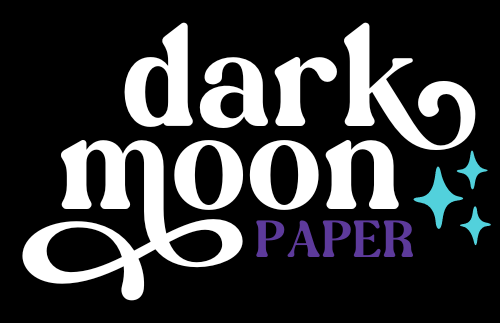
Why use planner stickers?
Planner stickers make organizing easy, fun, and personal! Add color, creativity, and structure to every page, transforming your planner into a tool that reflects you. Perfect for tracking, decorating, and staying inspired daily!
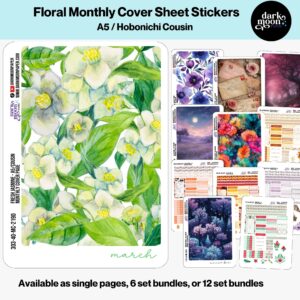
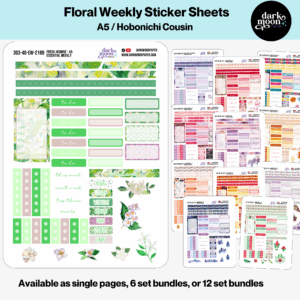
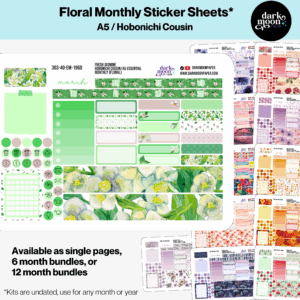
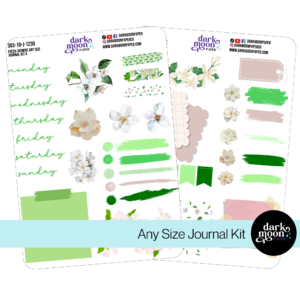
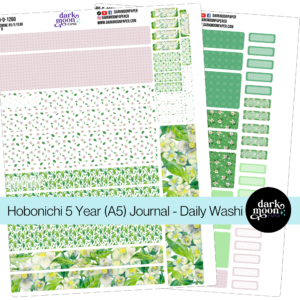
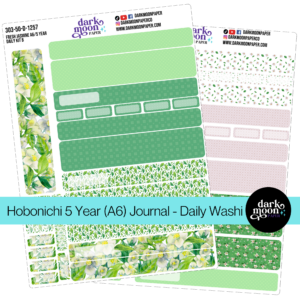


Hello and welcome!
I’m Rachael Snow, a lifelong artist and entrepreneur, and I started Dark Moon Paper to blend my love of art, technology, and the mysterious beauty of the world around us. My sticker kits are meant to set the mood, tell a story, and give you a little escape from the ordinary.
I work from my cozy studio tucked away in the beautiful woods of Oregon, surrounded by nature and a dark night sky full of stars.